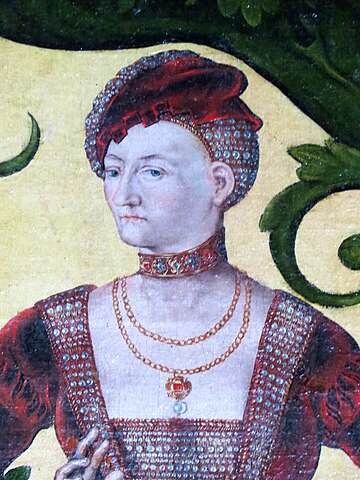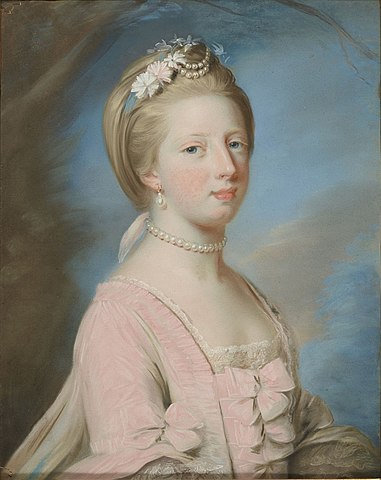Countessmeout
Imperial Majesty
- Joined
- Sep 19, 2011
- Messages
- 13,069
- City
- alberta
- Country
- Canada
December 12, 1995 death of Princess Caroline Mathilde of Denmark. If Danish law of succession was not changed, she would have been Queen Consort.
https://i2.wp.com/www.unofficialroyalty.com/wp-content/uploads/2015/01/Caroline-mathilde.jpg
Caroline was born a Princess of Denmark. Her father Prince Harald was a son of Frederick VIII. Her father was the younger brother of Christian X (her future father in law) and Haakon VII of Norway. Her mother was Princess Helena Adelaide of Schleswig-Holstein-Sonderburg-Glücksburg. On her mother's side she was the cousin of Princess Sibylla of Sweden (Carl Gustaf's mother). She was the second of their five children, with two sisters and two brothers.
Caroline-Mathilde was born April 27, 1912 in Jægersborghus, the house her parents bought in 1907. She was named for her maternal grandmother.
September 8, 1933 she was married to her cousin Knud, Hereditary Prince of Denmark. The bride was 21 and her groom and first cousin was 33. Knud was the second son of Christian X who was on the throne at the time. They lived at Sorgenfri Palace.
https://royalwatcherblog.com/2019/09/08/wedding-prince-knud-princess-caroline-mathilde/
Her father in law and Uncle died in April 1947. Her brother in law became Frederick IX. Frederick and his wife Ingrid of Sweden had three daughters so Knud was heir presumptive. In 1953 the law of succession was changed to allow a female to inherit. Knud found himself replaced as heir to the throne by his 13 year old niece Margrethe. Her husband resented the change in succession and caused a lot of family tension for years.
Her husband died in 1976 and was buried in Roskilde cathedral. She would out live her husband by 19 years. She died at their home and was buried next to her husband.
The couple had three children:
-Princess Elisabeth: she never married. She did live for years with her partner though Clause Hermansen until his death in 1997. She lived at her parents palace and was often at royal events. She was a diplomat with the foreign service. She sadly died in 2018.
-Prince Ignolf: he lost his title and place in succession when he chose to marry in 1968 without royal permission. His Uncle wouldn't grant it, despite Knud trying to convince his brother, as his wife was a commoner. He has been married twice, his first wife dying but he has no children from either wife. He has been Count Ignolf of Rosenborg. He and his wife attend events like royal weddings. Unlike his sister who remained in line for succession, and his brother, he receives an allowance.
-Prince Christian: Like his brother he lost his right to succession and is Count Christian of Rosenborg. His wife Countess Anne and he had Caroline-Mathilde's only grandchildren, three daughters. Like his brother he did attend events like Fred and Mary's wedding. He died in 2013 and his wife in 2014.
https://i2.wp.com/www.unofficialroyalty.com/wp-content/uploads/2015/01/Caroline-mathilde.jpg
Caroline was born a Princess of Denmark. Her father Prince Harald was a son of Frederick VIII. Her father was the younger brother of Christian X (her future father in law) and Haakon VII of Norway. Her mother was Princess Helena Adelaide of Schleswig-Holstein-Sonderburg-Glücksburg. On her mother's side she was the cousin of Princess Sibylla of Sweden (Carl Gustaf's mother). She was the second of their five children, with two sisters and two brothers.
Caroline-Mathilde was born April 27, 1912 in Jægersborghus, the house her parents bought in 1907. She was named for her maternal grandmother.
September 8, 1933 she was married to her cousin Knud, Hereditary Prince of Denmark. The bride was 21 and her groom and first cousin was 33. Knud was the second son of Christian X who was on the throne at the time. They lived at Sorgenfri Palace.
https://royalwatcherblog.com/2019/09/08/wedding-prince-knud-princess-caroline-mathilde/
Her father in law and Uncle died in April 1947. Her brother in law became Frederick IX. Frederick and his wife Ingrid of Sweden had three daughters so Knud was heir presumptive. In 1953 the law of succession was changed to allow a female to inherit. Knud found himself replaced as heir to the throne by his 13 year old niece Margrethe. Her husband resented the change in succession and caused a lot of family tension for years.
Her husband died in 1976 and was buried in Roskilde cathedral. She would out live her husband by 19 years. She died at their home and was buried next to her husband.
The couple had three children:
-Princess Elisabeth: she never married. She did live for years with her partner though Clause Hermansen until his death in 1997. She lived at her parents palace and was often at royal events. She was a diplomat with the foreign service. She sadly died in 2018.
-Prince Ignolf: he lost his title and place in succession when he chose to marry in 1968 without royal permission. His Uncle wouldn't grant it, despite Knud trying to convince his brother, as his wife was a commoner. He has been married twice, his first wife dying but he has no children from either wife. He has been Count Ignolf of Rosenborg. He and his wife attend events like royal weddings. Unlike his sister who remained in line for succession, and his brother, he receives an allowance.
-Prince Christian: Like his brother he lost his right to succession and is Count Christian of Rosenborg. His wife Countess Anne and he had Caroline-Mathilde's only grandchildren, three daughters. Like his brother he did attend events like Fred and Mary's wedding. He died in 2013 and his wife in 2014.
Last edited:






